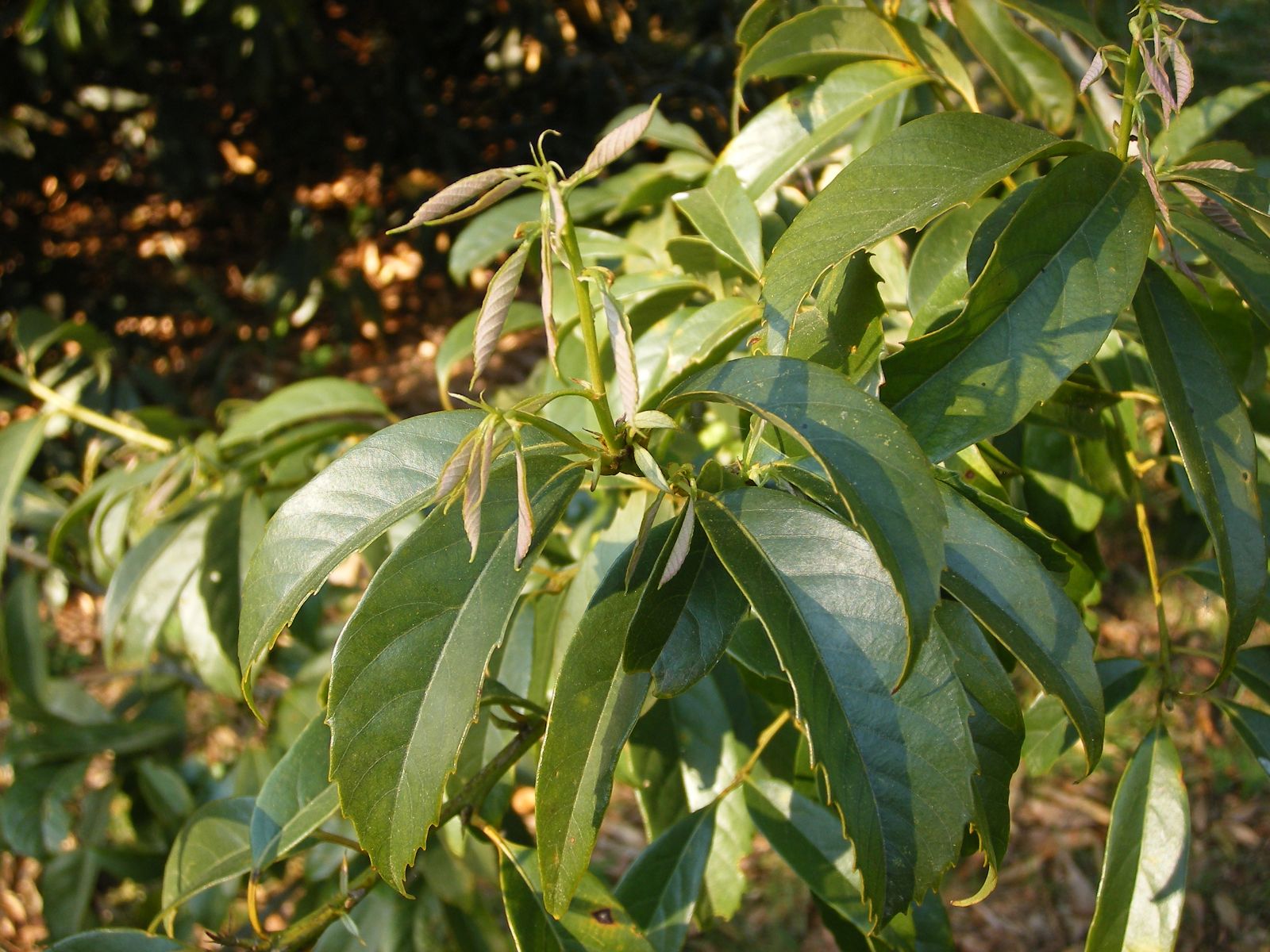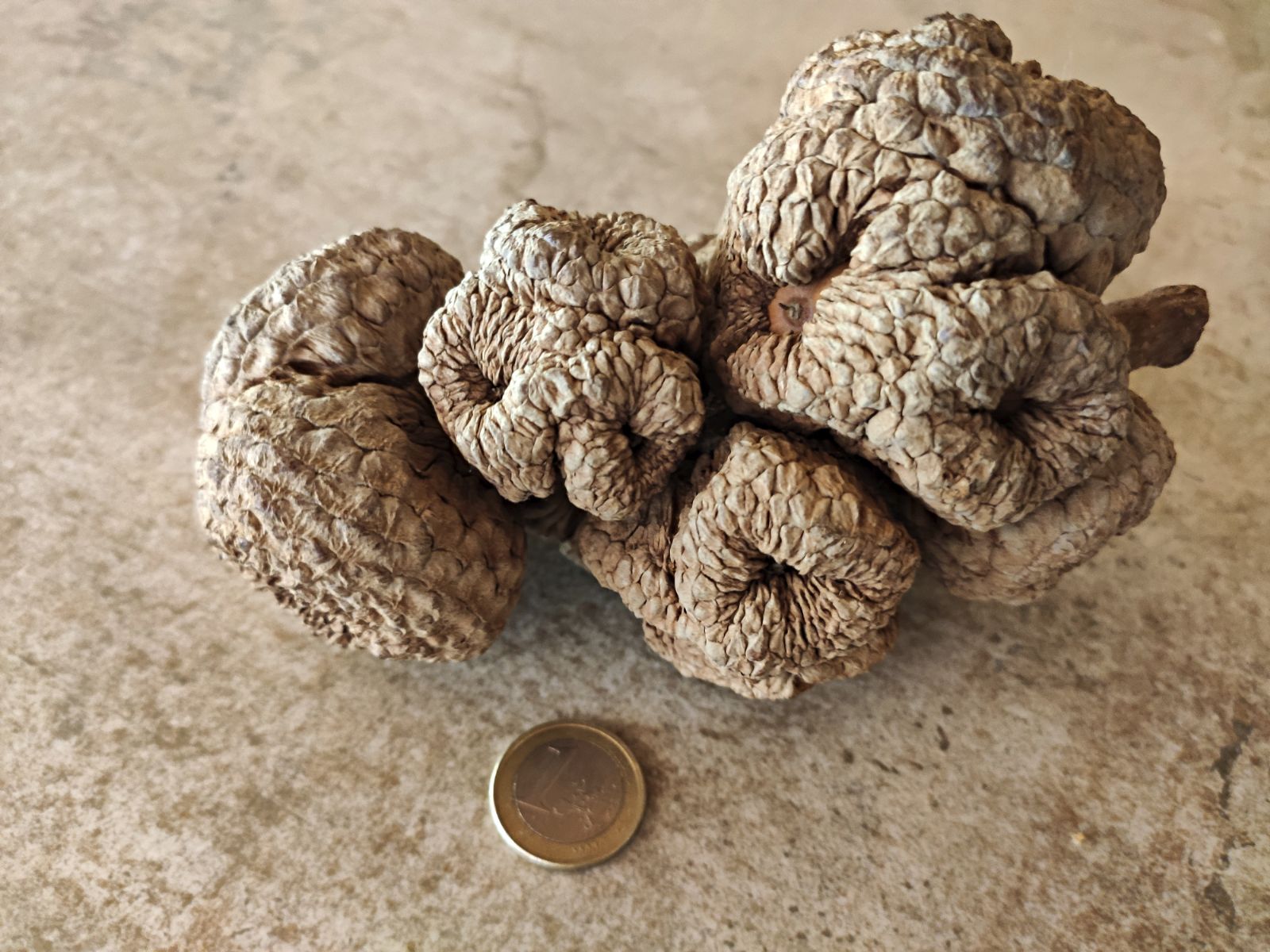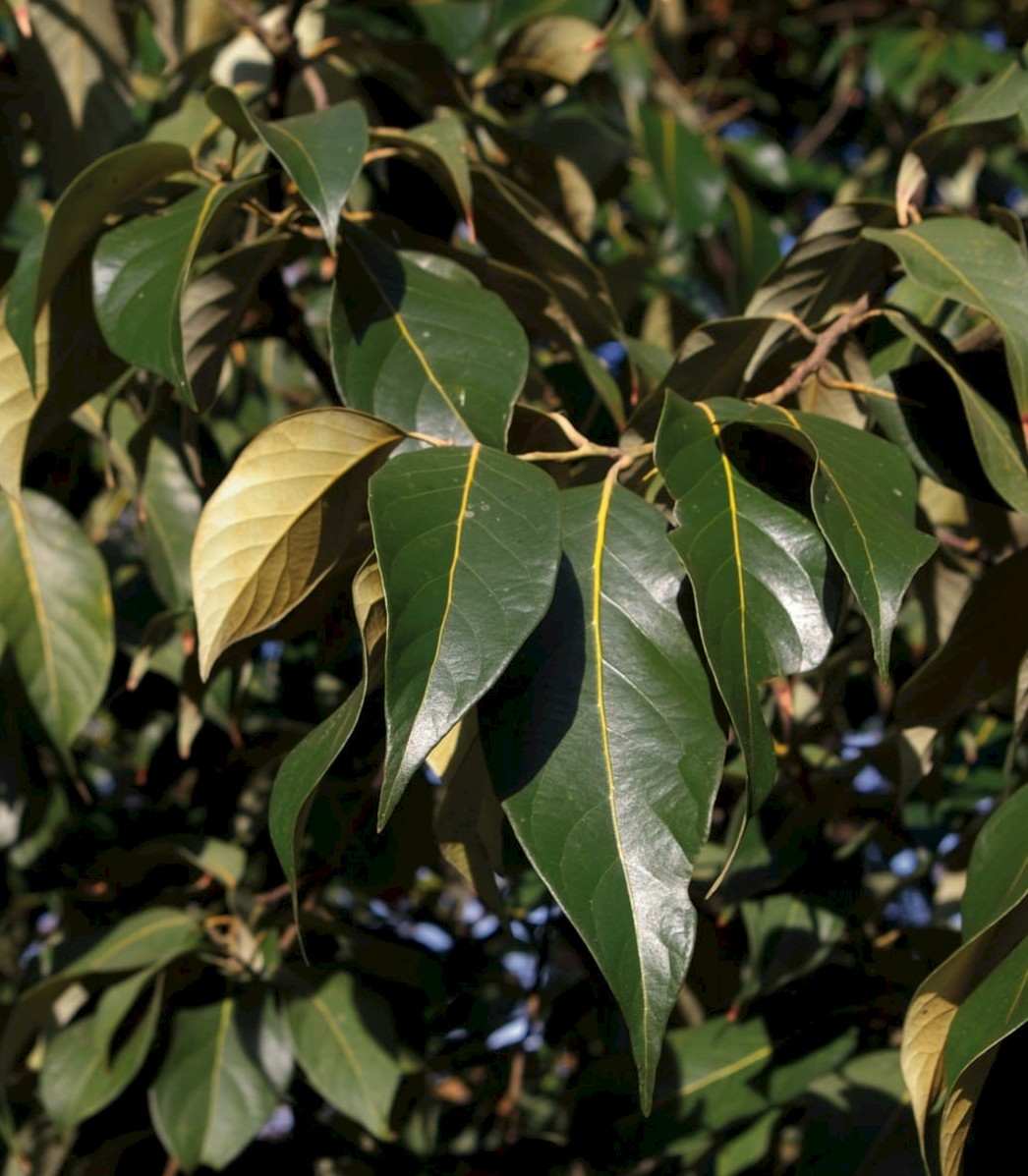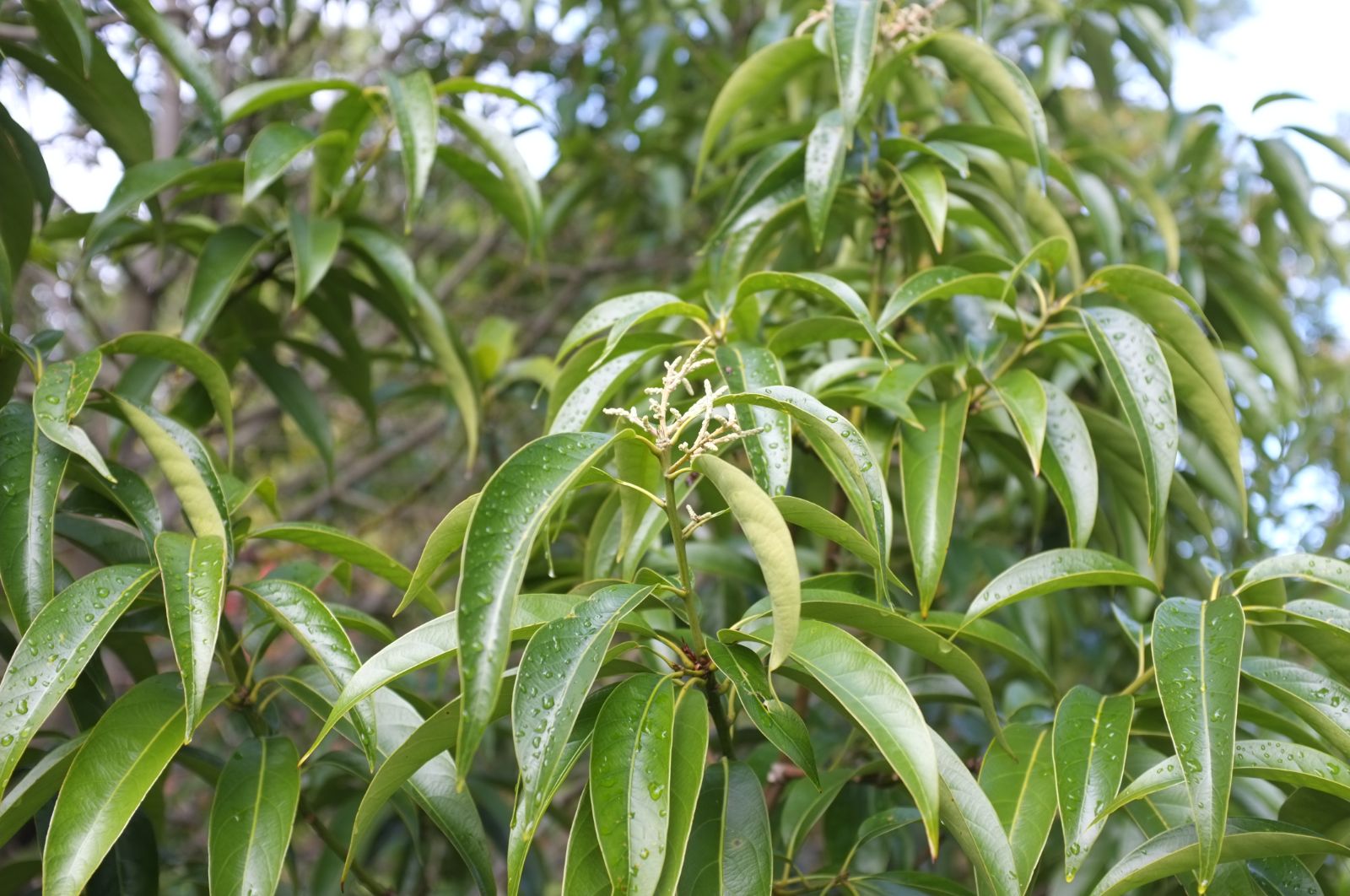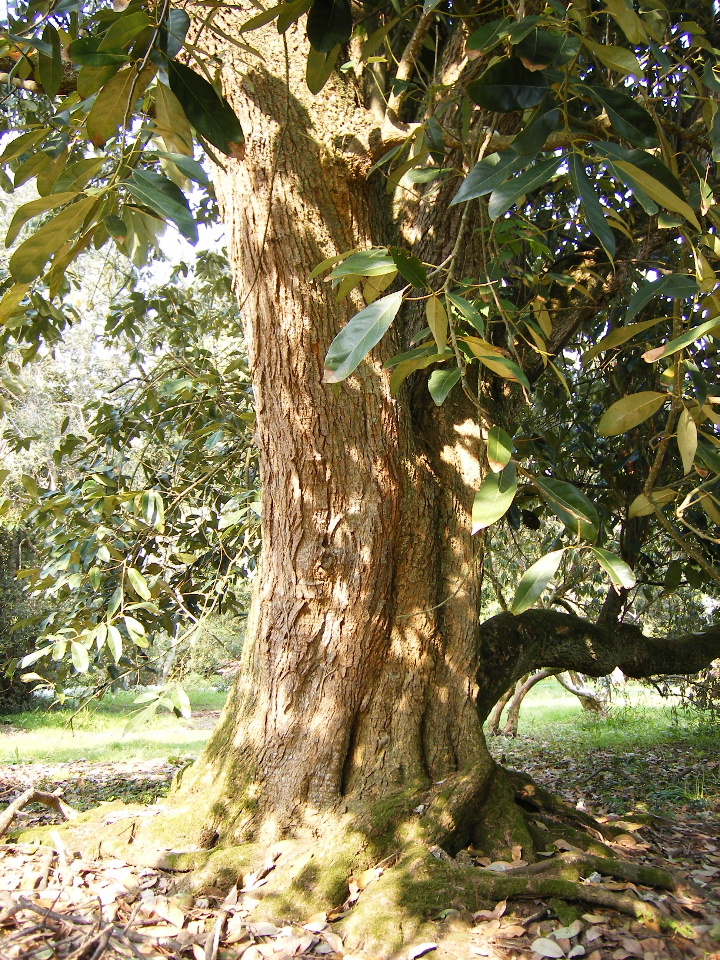Lithocarpus
Credits
Article from Bean's Trees and Shrubs Hardy in the British Isles
Article from New Trees by John Grimshaw & Ross Bayton
Recommended citation
'Lithocarpus' from the website Trees and Shrubs Online (treesandshrubsonline.
Family
- Fagaceae
Common Names
- Stone Oaks
Synonyms
- Pasania (Miq.) Oerst.
- Limlia Masam. & Tomiya
Three hundred and twenty-five species of Lithocarpus are recognised by Govaerts & Frodin (1998). Most occur in Asia and Malesia, with L. densiflorus (Hook. & Arn.) Rehder growing in California and Oregon. The stone oaks are evergreen trees (rarely shrubs) with terminal winter buds and extrapetiolar stipules. The leaves are spirally arranged, leathery and entire or with a toothed or serrate margin. Their secondary veins are unbranched and run in parallel, extending to the margins. Lithocarpus is monoecious and the inflorescences may be staminate, pistillate or androgynous. They are erect, simple or branched and produced in leaf axils at the base of branchlets; alternatively, they form paniculate clusters on subterminal shoots. The staminate flowers are small and in clusters of three to five (to seven); the pistillate flowers solitary or in clusters of (two to) three (to five), though usually only one or two develop fully. Cupules are clustered on the rachis, but many abort; they are corky, woody or crustaceous, and partially or completely enclose the single nut that forms the fruit (Nixon 1997, Huang et al. 1999).
Lithocarpus is a comparatively unfamiliar genus, but through its close relationship to Quercus, it is receiving increased attention from oak enthusiasts, and others who value handsome evergreen trees. Lithocarpus densiflorus, from California and Oregon, is an overlooked treasure, hardy throughout the British Isles, where the largest is in Edinburgh (12 m in 2004: TROBI). Its var. echinoides (R. Br. ter.) Abrams is a short-growing form from serpentine habitats, with particularly handsome bluish foliage and new growth covered in golden hairs, while f. attenuato-dentatus (J.M. Tucker) Sundahl & D.O. Hall is noted for both its long marginal teeth and white indumentum (Hogan 2008). Lithocarpus edulis from Japan has been cultivated since 1842, but remains seldom seen. A number of species were introduced from China by the early-twentieth century plant hunters and a few older specimens persist in the great Cornish gardens, especially at Caerhays and occasionally elsewhere (Johnson 2007). Several of these, including L. cleistocarpus, L. henryi and L. pachyphyllus, have been described by Bean (1981a). Also mentioned by Johnson (2007) is L. glaber (Thunb. ex Murray) Nakai, which has reached 9.5 m in southern England in the past – although Allen Coombes (pers. comm. 2007) believes that these trees may have been L. edulis. Lithocarpus glaber is now represented in British horticulture only by young seedlings, from a recent introduction by Allen Coombes. A tree labelled L. glaber in the JC Raulston Arboretum is approximately 8 m tall (JC Raulston Arboretum database).
In addition to the species described below, a series of contemporary introductions have resulted in the following being represented in cultivation by young plants, mostly in private gardens in the United Kingdom, although there are some in North America: L. brevicaudatus (Skan) Hayata, L. konishii (Hayata) Hayata, L. lepidocarpus (Hayata) Hayata, L. paniculatus Hand.-Mazz. (at Arboretum Waasland, Belgium), L. polystachyus (Wall. ex A. DC.) Rehder (at Firma C. Esveld, Boskoop, in the Netherlands), L. truncatus (King ex Hook. f.) Rehder and L. xylocarpus (Kurz) Markgr. (pers. comms. C. Battle, A. Coombes, J. De Langhe, T. Lasseigne, P. Wharton 2007). Material received at the Hillier Gardens, and possibly elsewhere, as L. confinis C.C. Huang ex Y.C. Hsu & H.W. Jen and L. harlandii (Hance ex Walp.) Rehder has turned out to be of L. dealbatus and L. henryi, respectively (A. Coombes, pers. comm. 2007). Neither L. confinis nor L. harlandii is known to be in cultivation. As with many genera there are also a number of unidentified introductions in arboreta, under collectors’ numbers, flowering and fruiting of which are awaited before identification will become possible. Among these is stock labelled ‘L. pathsapsis’ – a name that does not feature in botanical references. Allen Coombes (pers. comm. 2008) suggests that L. pachylepis A. Camus may be the root for this mutation.
The climate of Vancouver seems ideally suited to the successful growth of Lithocarpus from warm temperate areas, and several species are doing extremely well in the David C. Lam Asian Garden. Peter Wharton (pers. comm. 2007) attributed the success of L. variolosus there (despite the root competition it has to endure from the magnificent mature native conifers in the garden, and consequent droughty summer conditions) to its dense, white, ramifying mycorrhizae system, exemplifying the desirability of encouraging such an association.
The evidence suggests that some Lithocarpus species are capable of doing well in many of the milder parts of our area, but that others may have a more marginal existence here, growing in only the most favoured locations. All seem to appreciate mild and moist conditions, and like to be as warm as possible in the summer, but not scorched in full sun. A site with a high canopy is advisable, at least when the trees are young. Although some occur on limestone in the wild, in cultivation calcareous soils are probably best avoided. Propagation is most reliable from fresh seed. Cuttings are in general not very successful, but do work occasionally (Hogan 2008), and presumably grafting would be an option if a suitable stock was available.
Bean’s Trees and Shrubs
Lithocarpus
This genus is part of Quercus as understood by some botanists but the group is in fact very distinct from the true oaks and indeed is now placed in a different subdivision of the Fagaceae, namely the subfamily Castaneoideae. The botanical characters by which it differs from Quercus are: flower-spikes erect (in Quercus the male spikes are pendulous); male flowers with a rudimentary ovary and usually twelve stamens (six or less in Quercus); anthers minute; female flowers with minute pore-like stigmas. Other characters found in many species of Lithocarpus but not in Quercus are: flower-spikes often androgynous, i.e., comprising both male and female flowers, the latter usually at the base; shell (pericarp) of acorn sometimes thick, woody and furrowed (as in the type-species L. javensis); cup (cupule) sometimes of a bony or woody consistency (e.g., in L. pachyphyllus, q.v.).
With the exception of L. densiflorus of California all the species (about one hundred in all) are confined to E. and S.E. Asia (two of them in Japan).
The generic name Pasania, used in some works, is a synonym of Lithocarpus.

